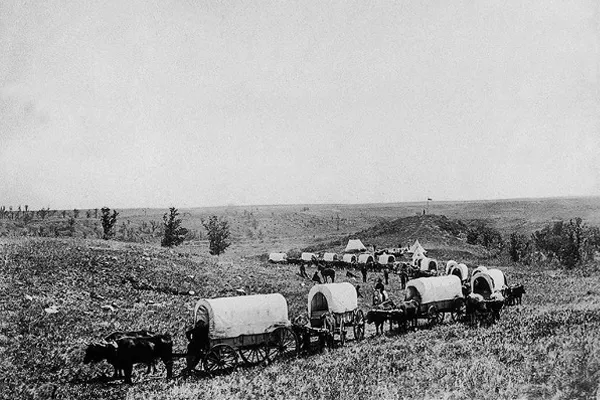
![]()
It seems pathetic to compare America’s 1800’s westward migration to a well-funded fintech expanding its product suite. But that’s exactly what I’m doing.
150 years ago, moving west to find greener pastures (and perhaps even gold), was a road touted with hopes, dreams and extreme danger.
One could remain in the built up eastern towns of New York or Boston. While living in cramped and untidy conditions, families could earn enough to make by. And so many stayed.
Yet the promise and aura of the west, with its vast land, fresh air and the ability to start a new life compelled great numbers to pack up their livelihoods and migrate via huge wagon convoys. Train tickets were too expensive for most.
Facing these westward groups however were months plagued with disease, hunger, dehydration, exposure, and of course the risk of being scalped alive and killed.
So it is today, even with abundant skim-fat lattes and ping pong tables in reach, the leadership of a well funded B2C lender must navigate difficult terrain if it is to extend its consumer offering to SMEs.
While the physical consequences remain reduced, for a company like Zopa (on the verge of a potential IPO), the risk of investor scalping is an ever present threat.
...
Recent news articles announced that the P2P consumer lender will be looking to serve SMEs with a potential average deal size of £100,000. This niche will put Zopa in
new territory. Very far west.
I’m sceptical about claims this move is a natural extension for Zopa. Overall I find it interesting that B2C lenders aren’t more focused on circling their wagons around sole trader or micro SME financing as a first mover.
Even in an acquisition play, i.e., buying an existing alternative lender to SMEs, it is a significant offering gap to maintain. From a £500 loan for a wage-earner still living at home, to providing a £100,000 risk-priced facility to a company and its directors.
If not careful, offering two products at such vast ranges can cause an identity friction point in hyper-growth organisations. Especially within sales, product and marketing teams.
...
Consumer lending is about speed, low touch, and user growth.
While SME lending (at the £100k range) is indeed becoming faster and more automated; it is fundamentally more relational and risk-priced driven (especially if you want your customers to return).
I find Micro-SME and sole trader financing (sub £25,000) more closely aligned to a B2C offering for two reasons:
Firstly, regulation. In the UK for instance, loans provided to sole traders under £25,000 are classed as ‘consumer finance’ and therefore require regulation (unless the product is a special exclusion, e.g., merchant cash advance).
Secondly, and why the first point exists, when lending to a sole trader or micro-SME you are more or less trying to determine the strength of the individual behind the business. Rather than the business itself.
...
My purpose here is not to attempt to discredit Zopa’s plans to acquire or build a SME finance offering. Simply to question how it is done.
Many of those who took part in the gold-rush more than a century ago found their fortune, and no doubt Zopa’s leadership are full of intelligent individuals with a good fighting chance.
To me, a more natural migration is the westward opportunity for B2C lenders to evolve their intuitive lending experiences (and hard-fought regulation) towards the vast and underserved micro-SME space.
Why join the wagon convoy when you can afford to catch the train.